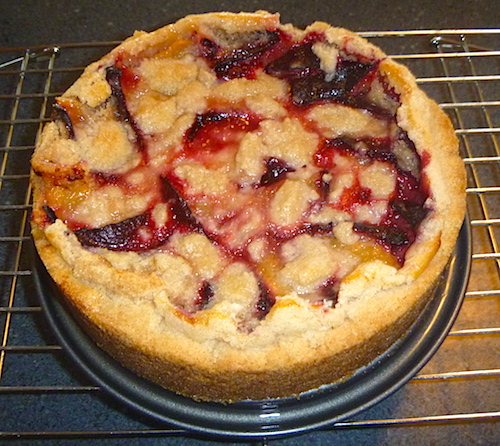Some of the greatest things about being married to a baker are the constant surprises. I came back today and this beautiful Mary Jane creation was on the kitchen counter. The most unique thing about this bread is that it’s unleavened–no yeast is used. Yet the bread rises–you can see it’s not a flatbread. The rising is caused by combining an acid (sour buttermilk) and a base (baking soda), which produces carbon dioxide gas, and the gas makes the bread rise. This bread was developed in England in the early 1800s, but before baking soda was invented. Ash was used as the base and muriatic acid was the other part of it. Here’s a recipe from 1836.
Mix separately 3/4 pint of water with pure muriatic acid (420 to 560 grains). Divide the flour into two parts. To one add the soda solution gradually, well stirring and beating the mixture. Then add the other portion of flour and while mixing pour in the diluted acid. Lightly kneed on a board for a short time. Loaves should be 1/2 lb to 1 1/2 lb each. Best baked under tins. Common salt can be added for taste.
Note that muriatic acid is commonly used to clean concrete. Yet they’re using an ounce of it, about two tablespoons, and fortunately it is diluted 12 times and then neutralized by the soda. Mary Jane used a much more elegant method, Ina Garten’s recipe, here. It makes incredibly good toast. And no one seems to know where the Irish appellation came from.











